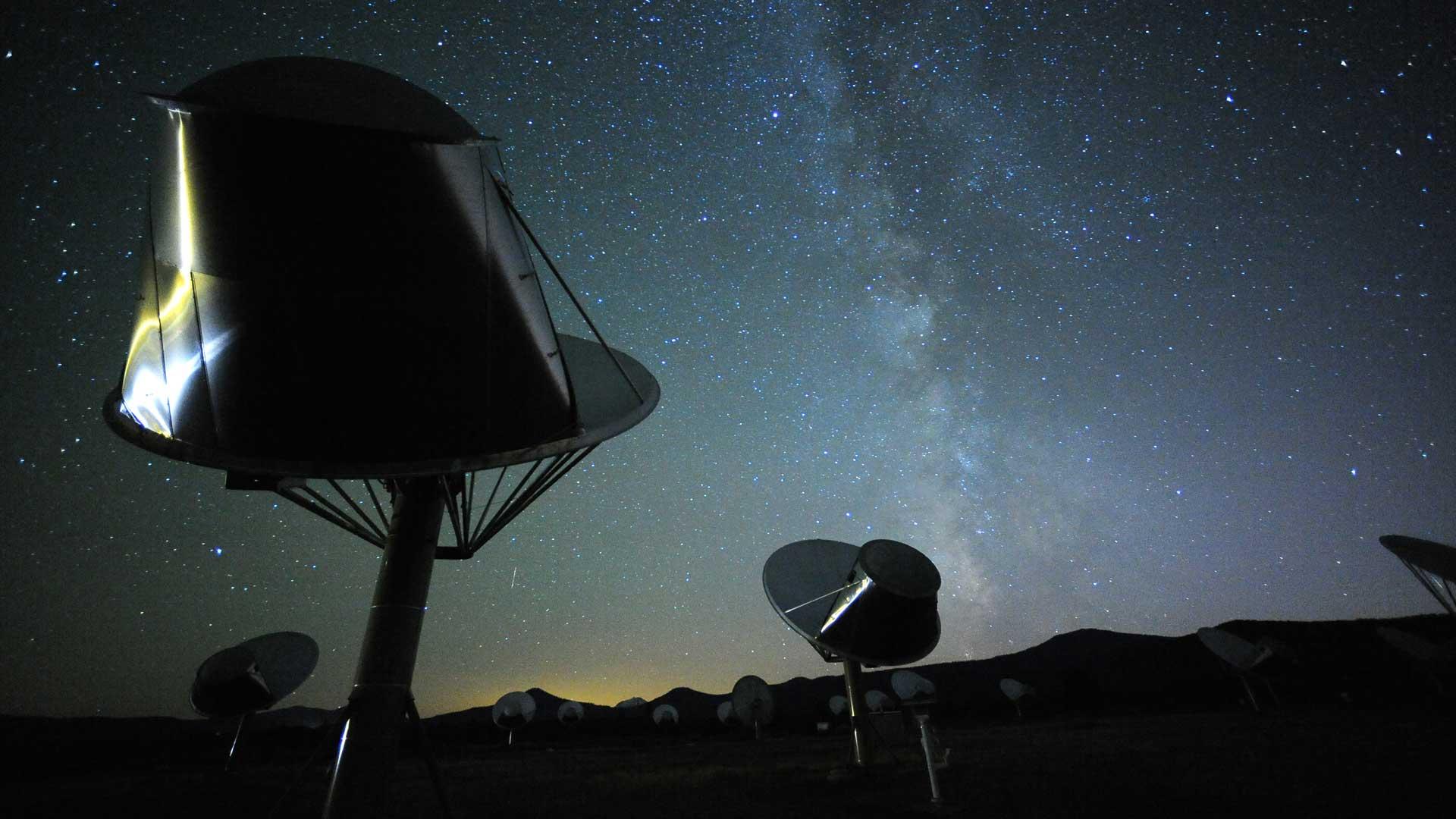
The Allen Telescope Array (ATA) is the first radio telescope to be designed from the ground up to be used for SETI searches.Until its construction, all radio SETI efforts were dependent on the intermittent use of antennas built for conventional astronomical observations.
That situation has changed. Thanks to the interest and benevolence of many donors, including technologists Paul Allen (co-founder of Microsoft) and Nathan Myhrvold (former Chief Technology Officer for Microsoft), the first 42 elements of the ATA have been built and are capable of conducting SETI searches every day of the week.These antennas are located at the Hat Creek Observatory, situated in the Cascade Mountains about 300 miles north of San Francisco.
Radio SETI experiments have traditionally relied on existing radio astronomy telescopes. While this allows such searches to be conducted on quite large instruments (for example, the 305 m Arecibo dish, in Puerto Rico), the amount of telescope time available for the search is necessarily restricted. Project Phoenix, for example, took control of the Arecibo telescope for approximately six weeks (total) in the spring and fall, during the period from September 1998 through March 2004. But as observations were only made at night, this amounted to a total of only three weeks of full-time observing each year, or roughly 5 percent of the available telescope time.
In contrast, the Allen Telescope Array offers SETI scientists access to an instrument seven days a week, and permits the search of several different targets (usually nearby star systems) simultaneously. This can result in a speed-up of SETI searches by a factor of at least 100. The ATA is also frequency nimble, able to observe simultaneously in four different bands.
The fundamental idea behind the Allen Telescope Array was developed during a series of workshops held in 1997 - 1999, in which a group of about three dozen scientists, engineers, and technologists considered how best to pursue SETI in the coming two decades (the SETI Science and Technology Workshops). The favored scheme was an array of relatively small dishes (antennas), with a nearly-random arrangement on the ground extending over about 1 km. This provides a very high-quality beam shape (the small patch of the sky to which the telescope is most sensitive) and, thanks to the relatively large number of antennas, also minimizes (unwanted) sensitivity outside the primary beam. This mitigates the pickup of terrestrial interference.
The Allen Telescope Array was originally designed to cover frequencies between 500 and 10,000 MHz, which is more than five times the range searched in Project Phoenix. Thanks to a generous donation from Franklin Antonio (co-founder and Chief Scientist at Qualcomm) the ATA receivers are now being replaced with new systems that will cover 1,000 to 15,000 MHz, and offer improved sensitivity and greater reliability.
Software for the search, dubbed SonATA (SETI on the ATA) is a software-only search system implemented with enterprise servers donated by Dell and Intel. Detailed descriptions of the SonATA system that began operation in 2010 can be found here.
Currently, a new software system is being developed in parallel with the Antonio feed amplifiers described above.
By building the new telescope as an array, several major advantages can be realized. To begin with, many “pixels” can be generated on the sky at once. Rather than looking at only one star at a time, as the Arecibo telescope and its kin were constrained to do, several stars can be examined simultaneously. This again speeds up the process of stellar reconnaissance. In some cases, it may be desirable to sacrifice spectral resolution (typically 1 Hz) in order to gain additional pixels. In other words, one can trade amount of sky covered for sensitivity to very narrow-band signals. Depending on the type of signal we expect, this might be a judicious trade-off.
In addition, it is easy to expand an array by merely buying additional antennas and connecting them into the system. Single, large dish antennas are not amenable to such simple improvement. The bottom line is compelling. Because of its ability to study many areas on the sky at once, with more channels and every day of the week, the Allen Telescope Array will be able to check out a truly significant sample of the cosmic haystack. This is not an incremental step forward: the Allen Telescope Array was constructed to increase the stellar reconnaissance for artificial signals by orders of magnitude. It is a very large step for SETI research.
The design for the Allen Telescope Array’s antennas – so clearly different from the type of “tripod” arrangement found in many backyard satellite dishes – incorporates so-called offset optics because sometimes, as in football, going to the side can reduce interference. The antennas use what’s known as an offset Gregorian system. A secondary mirror bounces incoming radio signals collected by the large (6.1 meter diameter) primary reflector back to the feed antenna (hidden from view by a fabric shroud) where they are amplified and sent on to the control buildings on an optical fiber.
By introducing a secondary mirror and a surrounding shroud, the antenna is less likely to pick up noisy radio radiation from the (relatively hot) ground surrounding the telescope. Moving the reflector assembly off-center minimizes the chance of terrestrial signals bouncing off the antenna structures and interfering with our search for intentional transmissions. This offset design has also been used for the 100 m Robert C. Byrd Telescope, in operation at West Virginia’s Green Bank Observatory.
More information:
- Seth Shostak
